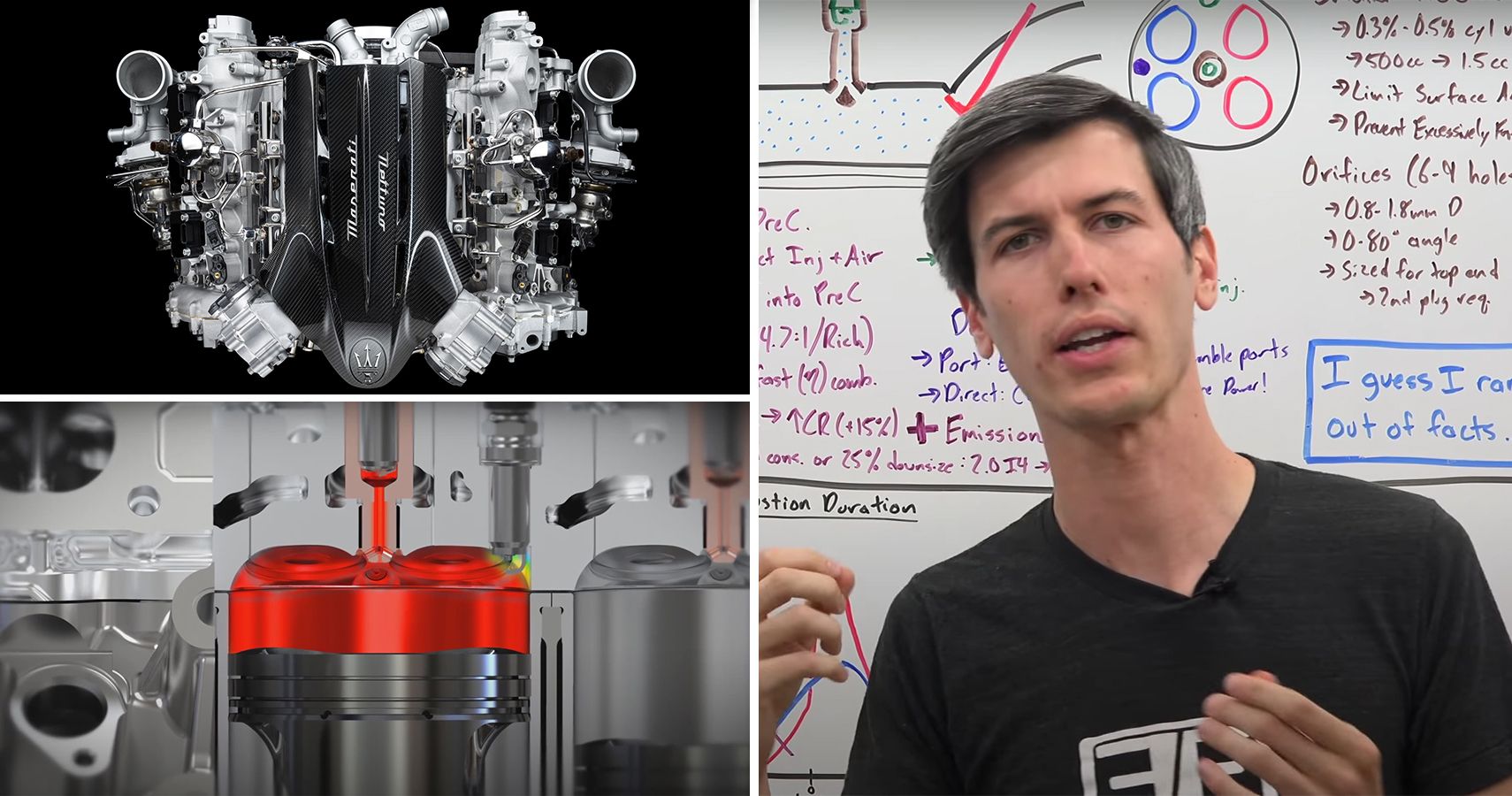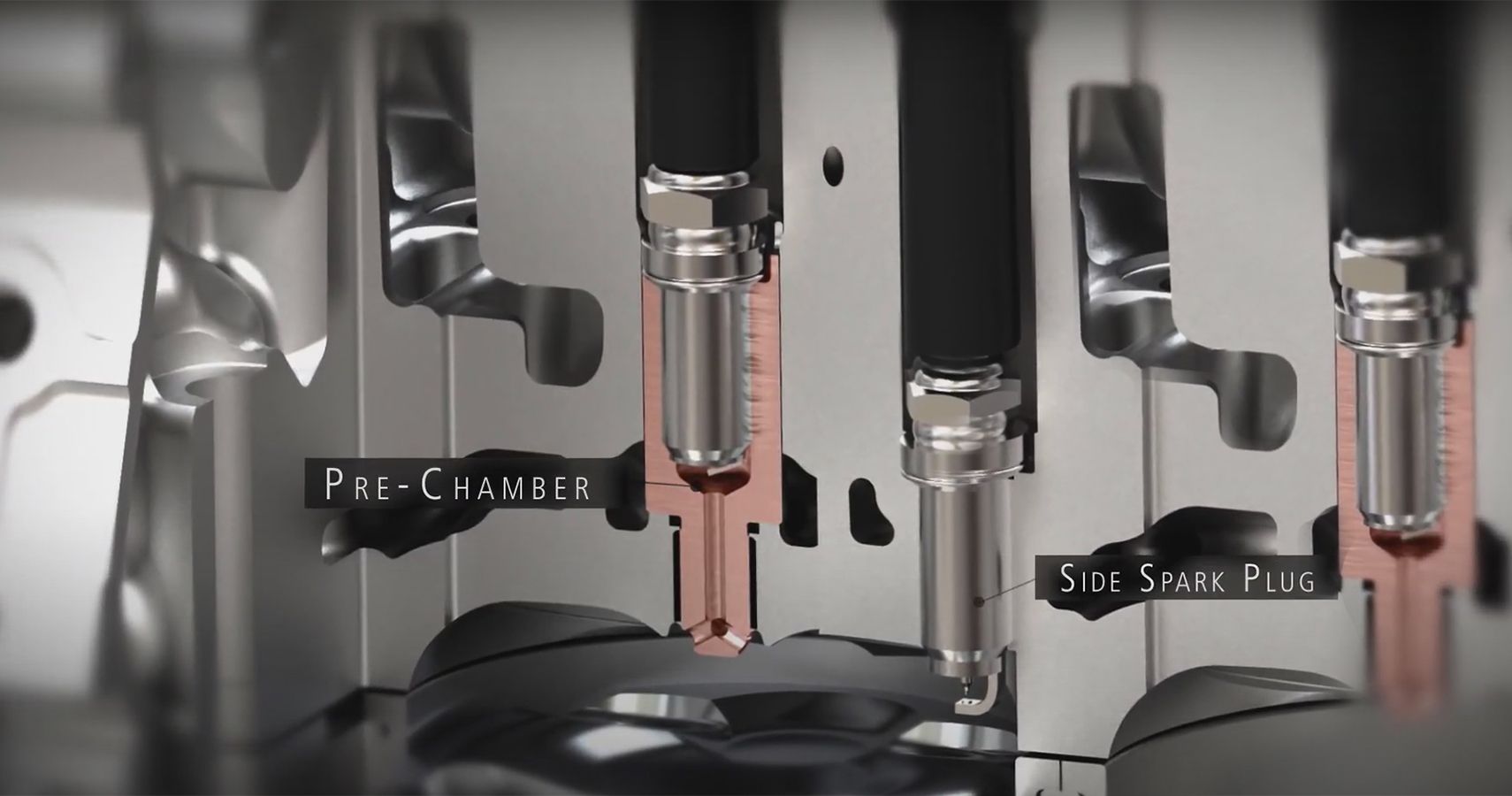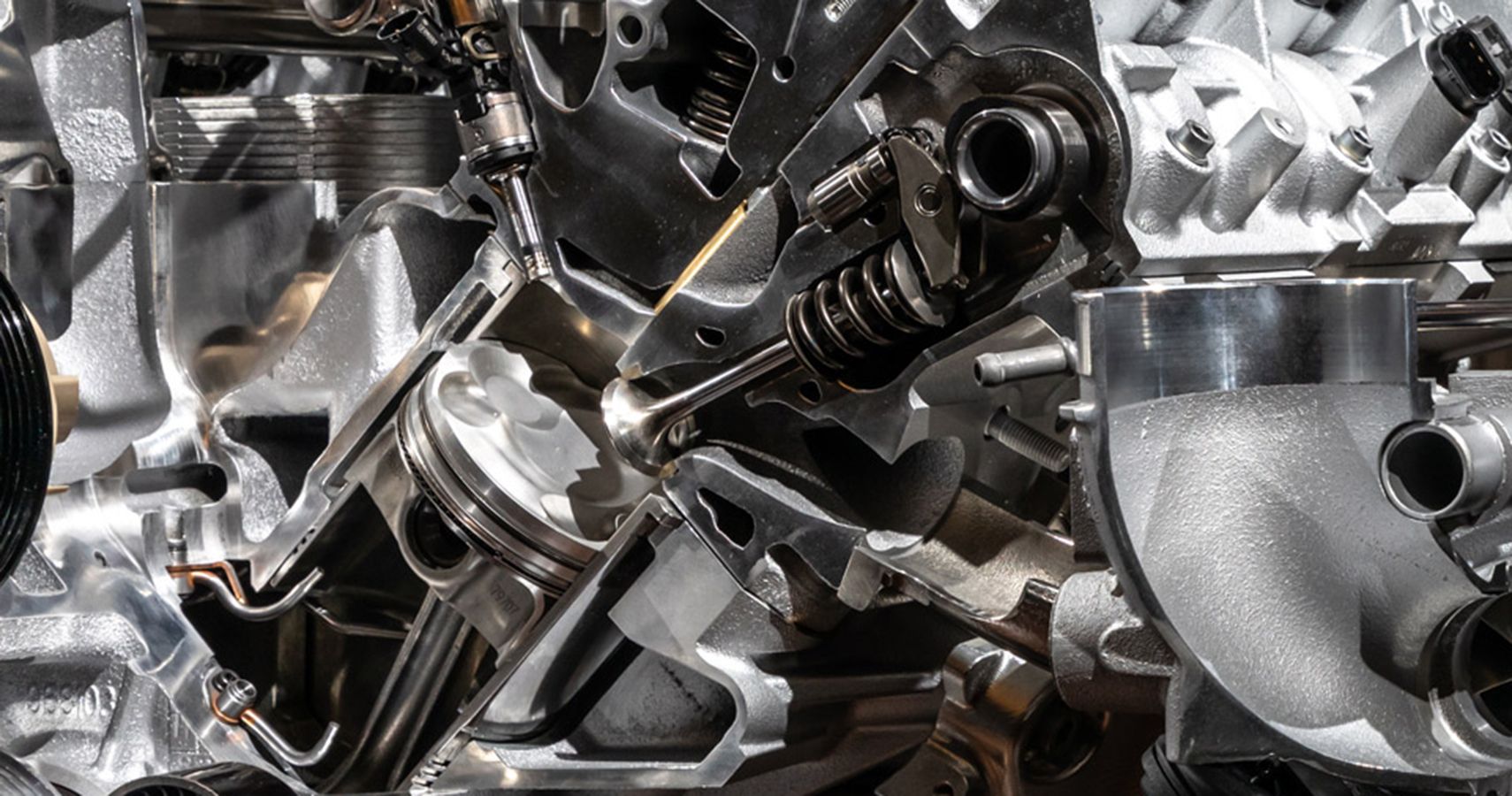The new Maserati MC20 supercar is indeed an audacious marriage between power and beauty in Italian style. One reason for this is its new three-liter twin-turbocharged Nettuno V6 engine, which employs a technology derived from Formula 1 to achieve greater levels of performance and efficiency. How this feat was achieved is further detailed by YouTuber Jason Fenske, also known as Engineering Explained.
Passive Pre-Chamber Setup
According to Maserati, Nettuno employs a Formula 1-derived technology called pre-chamber combustion, which makes use of twin-spark plugs. A pre-chamber is a separate combustion chamber located between the main cylinder area and the central electrode. There are two types of pre-chamber: active and passive.
The pre-chamber used in Maserati's Nettuno V6 engine is a passive type, which means that it doesn’t have any added fuel or air. However, a passive pre-chamber has a spark plug that when ignited, the flame will spread over a wide area in the main cylinder. This significantly speeds up combustion cycle, thereby increasing the compression ratio by 15% while reducing emissions by 30%.
Twin Injection System, Dual Spark Plugs
To extract more power, the Nettuno engine employs a twin injection system: port (indirect) and direct. Port injection allows the creation of a more potent air-fuel mixture, which would then be cooled by direct injection. This combo improves fuel consumption while lowering emissions.
Interestingly, a side spark plug is installed inside the main cylinder. During low loads, both spark plugs are fired – the side spark plug first, followed by the one in the pre-chamber. By firing the spark plugs in succession, combustion is stabilized. However, during high loads, only the spark plug in the pre-chamber is fired.
Question Of Long-Term Reliability
Supported by twin turbochargers, the Nettuno engine delivers 620 hp of max output and 538 lb.-ft. of peak torque. Nonetheless, Fenske noted that there's still a question of reliability in the long term since this technology is complex to begin with. He also noted that carbon may build up over time since neither fuel nor air passes through the pre-chamber during combustion.
Source: Engineering Explained On YouTube



